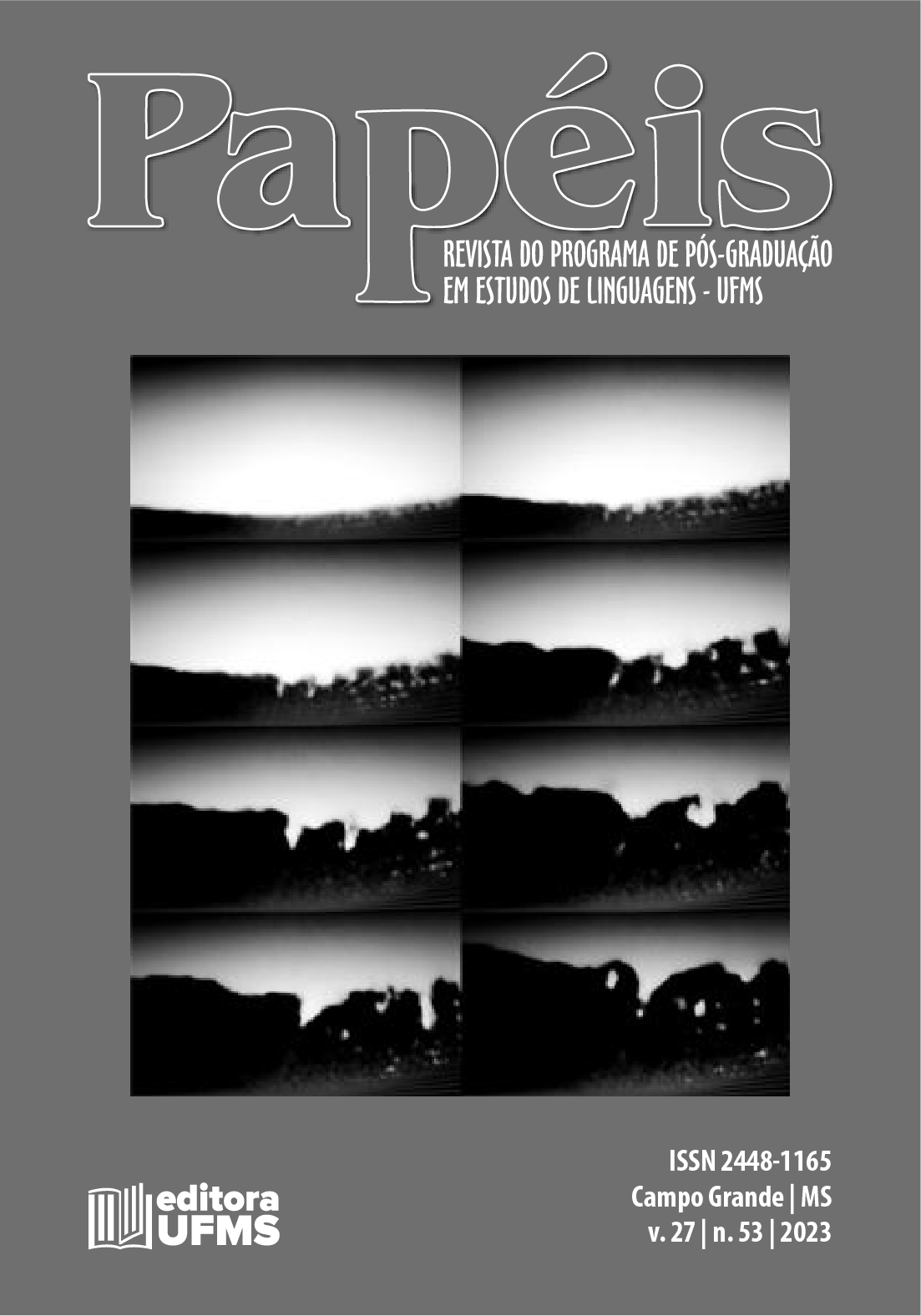Compound toponyms in European Portuguese: parish names in the Portuguese districts of Aveiro and Guarda
Abstract
This paper analyses the use of compounding as a process of formation of toponymic designations in Portugal, taking as a case study the names of parishes in the districts of Aveiro and Guarda. The aim is, on the one hand, to understand the importance of compounding in the generation of toponymic designations in Portugal and, on the other hand, to understand in a more detailed way the properties - morphological and syntactic-semantic - of the compound toponymic designations under study. To this end, we started by analysing 544 designations of Portuguese parishes from the two districts mentioned above, based on the list available at the Portal do Eleitor (https://www.portaldoeleitor.pt/). The data analysed allows confirming that compounding corresponds to a relevant word formation process in Portuguese toponymy, having been verified that 41% of the parish names in the districts under analysis are compound names. The toponyms under analysis present a great diversity in what concerns the compositional schemes, but the most common is the [NprepdetN]N scheme. These compound toponymic names, integrating vocabulary from very diverse lexical-conceptual areas, reflect influences from geographic and social characteristics of these two Portuguese administrative regions.
References
AMARAL, E.T.; SEIDE, M. S. Nomes próprios de pessoa: introdução à antroponímia brasileira. São Paulo: Blucher, 2020.
AZEVEDO, M. L. Toponímia moçárabe no antigo Condado Conimbricense. Tese de doutoramento em Letras, área de Línguas e Literaturas Modernas (Linguística Portuguesa) apresentada à Fac. de Letras de Coimbra. Coimbra: Faculdades de Letras da Universidade de Coimbra, 2006. Disponível em https://estudogeral.uc.pt/handle/10316/716
CARVALHINHOS, P. J. Onomástica e lexicologia: o léxico toponímico catalisador e fundo de memória. Estudo de caso: os sociotopônimos de Aveiro (Portugal). Revista USP, v.56, p. 172-179, 2002-2003. Disponível em https://www.revistas.usp.br/revusp/article/view/33819
CUNHA, C.; CINTRA, L. Nova Gramática do Português Contemporâneo. Lisboa: Edições João Sá da Costa, 1998.
DICK, M. Toponímia e antroponímia no Brasil. São Paulo: USP, 1990.
GONSALVES, D; TAVARES, M. Sintagma Toponímico: um exame com base em dados do ATEMS. IN: ISQUERDO, A. N. (Org.). Toponímia: Tendências toponímicas no Estado de Mato Grosso do Sul – volume 2. Campo Grande: Universidade Federal de Mato Grosso do Sul, 2020, p. 211-227. Disponível em https://repositorio.ufms.br/handle/123456789/3549
ISQUERDO, A. Apresentação. IN: ISQUERDO, A. (Org.). Toponímia urbana do Brasil: Estudos – volume 3. Campo Grande – MS: Editora UFMS, 2023, p.7-15. Disponível em https://repositorio.ufms.br/handle/123456789/5662
KOHNLEIN, B. The morphological structure of complex place names: the case of Dutch. The Journal of Comparative Germanic Linguistics, v.18, p. 183-212, 2015. Disponível em https://link.springer.com/article/10.1007/s10828-015-9075-0
LOFSTROM, J. Lexicographic Treatment of Toponyms. In: TORT I DONADA, Joan.; MONTAGUT I MONTAGUT, Montserrat (Eds.). Els noms en la vida quotidiana. Actes del XXIV Congrés Internacional d’ICOS sobre Ciènces Onomàstiques. Generalitat de Catalunya. Departament de Cultura, 2014, p. 1259-1268. Disponível em http://www.gencat.cat/llengua/BTPL/ICOS2011/130.pdf
LOFSTROM, J.; SCHABEL-LE CORRE, B. Comment analyser et comparer les toponymes de différentes langues dans une perspective synchronique. Nouvelle Revue d’Onomastique, 52, pp. 291-318, 2010. Disponível em https://www.persee.fr/doc/onoma_0755-7752_2010_num_52_1_1549
MANDOLA, M. Approche synchronique-contrastive en toponymie. In : TAMINE, M ; GERMAIN, J. Mode(s) en onomastique: Onomastique belgoromane, 2015, p. 41-56. Disponível em https://www.academia.edu/41725448/Approche_synchronique_contrastive_en_toponymie
MARQUES, E. A. Fraseotopônimos: estabelecendo diálogos entre a fraseologia e a toponímia. Guavira-Letras, v.35, n.35, p. 23-33, 2017. Disponível em http://websensors.net.br/seer/index.php/guavira/article/view/589
PELLENS, J.B; SANTOS, A. V. Nomes justapostos em uso no Brasil. Inventário, v.25, p. 23-42, 2020. Disponível em https://periodicos.ufba.br/index.php/inventario/article/view/33841
RANCHOD, E. O Lugar das Expressões “Fixas” na Gramática do Português. In: CASTRO, I.; DUARTE, I. (Eds.). Razões e Emoções: Miscelânea de Estudos oferecida a Maria Helena Mira Mateus. Lisboa: Imprensa Nacional-Casa da Moeda, 2003. P. 239-254.
Reorganização freguesias. Portal do Eleitor (s/d). Disponível em URL https://www.portaldoeleitor.pt/Paginas/ReorganizacaoAdministrativa.aspx Acesso em 18 de março de 2023.
SALEMA, L. Torres, castelos e castros no mapa linguístico de Portugal Continental. Géolinguistique, v.16, p. 225-252, 2016. Disponível em https://journals.openedition.org/geolinguistique/570
SCHNABEL-LE CORRE, B. Nouns and Noun Phrases as Modifiers in Complex Toponyms: Structure, Function and Use in German, English and Swedish. In: TORT I DONADA, Joan.; MONTAGUT I MONTAGUT, Montserrat (Eds.). Els noms en la vida quotidiana. Actes del XXIV Congrés Internacional d’ICOS sobre Ciènces Onomàstiques. Generalitat de Catalunya. Departament de Cultura, 2014, p. 1427-1435. Disponível em http://www.gencat.cat/llengua/BTPL/ICOS2011/148.pdf
SCHNABEL-LE CORRE, B. Prepositional Phrases and Coordinated Phrases in Toponyms : a Constrastive Study of Germanic and Romance Languages. In: LOFSTROM, J.; SCHABEL-LE CORRE, B. Challenges in Syncronic Toponymy. Défis de la toponymie synchronique. Tübingen: Narr Francke Attempto Verlag, 2015.
SILVA, C.; ISQUERDO, A. Fraseo(topônimos): um estudo de topônimos polilexicais na perspetiva da fraseologia. Revista do GEL, v.17, n.2, p.286-308, 2020. Disponível em https://revistas.gel.org.br/rg/article/view/2450
URSINI, F.-A. On the structure of toponyms. In: KŐRTVÉLYESSY, L.; ŠTEKAUER, P.; VALERA, S. (Eds.). Word Formation Universals. Newcastle upon Tyne: Cambridge Scholars Publishing, 2017, capítulo 15. Disponível em https://www.researchgate.net/publication/314766536_ON_THE_STRUCTURE_OF_TOPONYMS
VILELA, M. O léxico do português: perspetivação geral. Confluência, v. 8, p. 17-30, 1994. Disponível em https://www.revistaconfluencia.org.br/rc/article/view/755/514
VILLALVA, A. Composição. In: RAPOSO, E. P. et al (Orgs.). Gramática do Português – volume 3. Lisboa: Fundação Calouste Gulbenkian, 2020. p. 3151-3210.
XXX, XXX, 2016
XXX, XXX, 2010
Autores que publicam nesta revista concordam com os seguintes termos:
- Autores mantém os direitos autorais e concedem à revista o direito de primeira publicação, com o trabalho simultaneamente licenciado sob a Licença Creative Commons Attribution que permite o compartilhamento do trabalho com reconhecimento da autoria e publicação inicial nesta revista.
- Autores têm autorização para assumir contratos adicionais separadamente, para distribuição não-exclusiva da versão do trabalho publicada nesta revista (ex.: publicar em repositório institucional ou como capítulo de livro), com reconhecimento de autoria e publicação inicial nesta revista.
- Autores têm permissão e são estimulados a publicar e distribuir seu trabalho online (ex.: em repositórios institucionais ou na sua página pessoal) a qualquer ponto antes ou durante o processo editorial, já que isso pode gerar alterações produtivas, bem como aumentar o impacto e a citação do trabalho publicado (Veja O Efeito do Acesso Livre).

Este obra está licenciado com uma Licença Creative Commons Atribuição-NãoComercial 4.0 Internacional.




